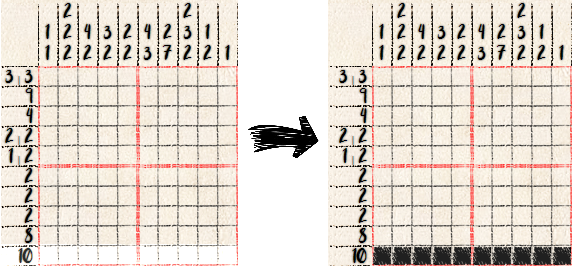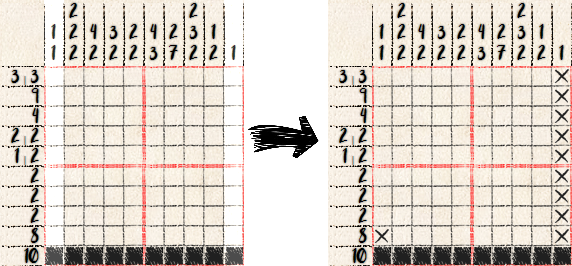About Nonograms
Nonograms are pixel art puzzles invented in Japan.The puzzle begins as an empty grid of a specified size with a series of numbers in each row and column.
The numbers represent groups of filled in pixels, with at least 1 blank space between each group in that row or column.

We can see in this example that the bottom row has just 1 number, a 10. Since the grid is 10x10 in size then this entire row must be filled with pixels.

We can also use X symbols to mark tiles where we know there cannot be any pixels. In this case the right-most column only has a single 1 in it, so with 1 pixel already in the column the rest of the column must be blank. In the left-most column there are two 1s, so the tile above the bottom pixel must be blank, while the other pixel could be anywhere in the column.

We can continue this process, filling in tiles which we know contain pixels, and eliminating tiles that we know are blank.

Once we have correctly filled in all of the rows and columns we will be left with a picture, in this case of a palm tree on an island.

Some Nonograms are coloured, and have multiple different colours of pixels you can fill in. For coloured puzzles the colour of the number indicates the colour for that block of pixels in that row or column. Pixel blocks of the same colour next to each other still must have at least 1 space between them, but pixel blocks of different colours when adjacent do not need any space betwen them (see example below):

There are lots more tricks to solving nonograms, but those are for you to discover. For now have fun.